Japanese Art in the Golden Age Drawings Golden Age in Japan Art
Advertisements from Japan's Gold Age of Art Deco
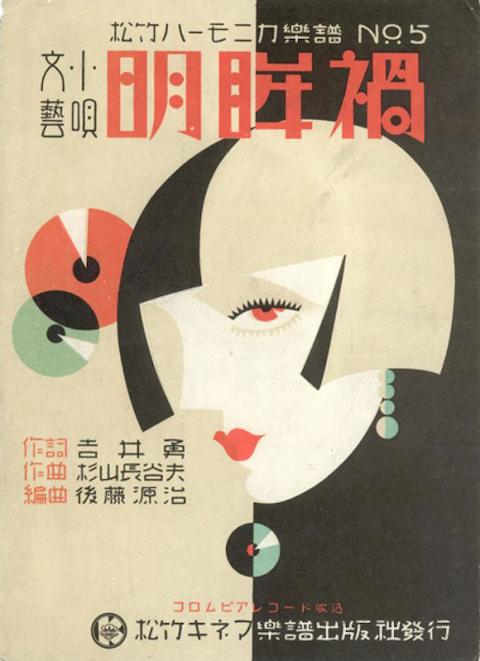
Go talking with graphic design people, and Japan will come up sooner or later. That country, e'er a world leader in aesthetics, has put the time and energy of generations into perfecting the subject field. You tin see this progress charted out on the Tokyo-based Ian Lynam Design's "Misruptions/Disruptions: A Japanese Graphic Design History Timeline." It labels the busy period of 1910-1941 as the time of an "adoption of Western Avant Garde aesthetics in Graphic Design & Typography, coinciding with Left-leaning experimentation and increased state suppression of the Left" — and the time that gave ascent to Japanese Art Deco.
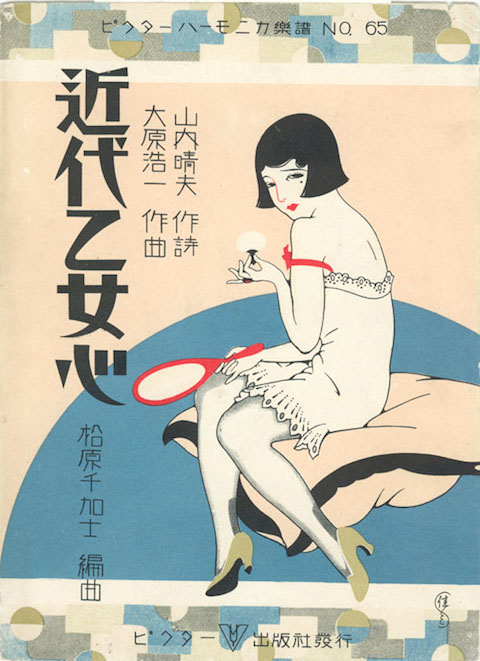
Last year, I attended Deco Japan, a show at the Seattle Fine art Museum, which showcased a smashing many artifacts from that prewar move of such combined creative and commercial abundance. It put on display all manner of paintings, vases, pieces of furniture, household items, and packages, merely somehow, the menstruation advertisements struck me every bit nonetheless the nigh vital of all. The Japanese graphic designers who made them drew, in the words of Capital letter'south Grace-Yvette Gemmell, "on staples of progressive European and American high and popular art, incorporating stylized versions of gears and clocks that bring to mind Fritz Lang'sMetropolis and Charlie Chaplin'southModern Times."
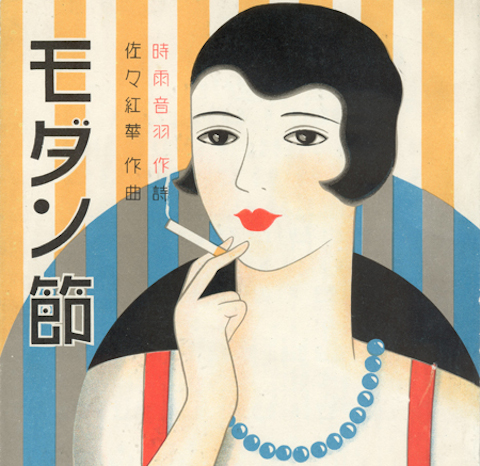
This makes more sense than it sounds like it would: "the Deco utilise of foreign imagery and design elements was a near seamless process given existing practices of both abstraction and cultural appropriation at work in the decorative arts at the time in Nihon. Many traditional designs already possessed a sort of visual affinity with the Fine art Deco aesthetic; the synthesis of conventional pattern elements with gimmicky, pared-down forms appealed to the culture'south collective knowledge of traditional motifs and symbols while feeding their desire for mod consumer products that reflected a slap-up sense of cosmopolitanism perfectly combining the old with the ultramodern."
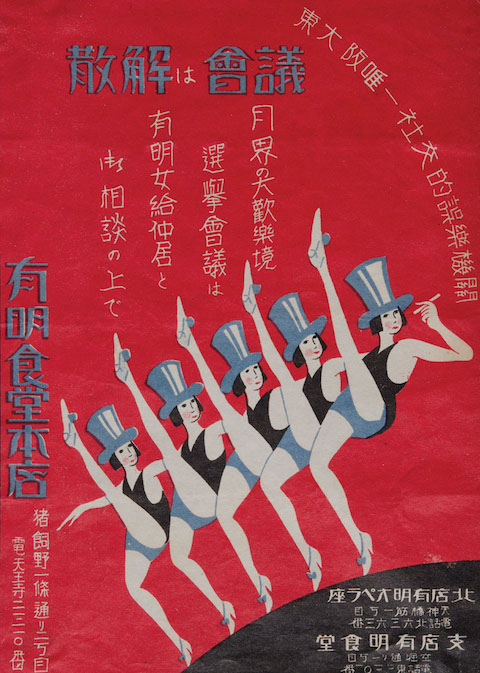
Many of the advertisements, or other works of graphic design similar leaflets and magazine covers, to come out of Nippon'south Art Deco gold age feature the prototype of the "moga," or, in Japanized English, "mod girl." Having appeared in Nippon as a new kind of jazz-loving, bob-haired, relatively liberated woman, the moga quickly became an attractive commercial proposition. The Asian Fine art Museum printed up a leaflet of their own, list off the "ten qualifications for existence a moga" as originally enumerated in 1929 by illustrator Takabatake Kashō in the magazineFujin sekai (Ladies' World):
- Strength, the "enemy" of conventional femininity
- Conspicuous consumption of Western food and drink
- Devotion to jazz records, dancing, and smoking Gilded Bat cigarettes from a metallic cigarette holder
- Knowledge of the types of Western liquor and a willingness to flirt to go them for free
- Devotion to fashion from Paris and Hollywood as seen in foreign mode magazines
- Devotion to cinema
- Real or feigned interest in dance halls as a way to testify off one's ostensible decadence to mobo (modern boys)
- Strolling in the Ginza every Sat and Sunday nighttime
- Pawning things to get money to purchase new clothes for each season
- Offering i's lips to any man who is useful, even if he is bald or ugly, but keeping one's guiltlessness considering "infringement of guiltlessness" lawsuits are out of style
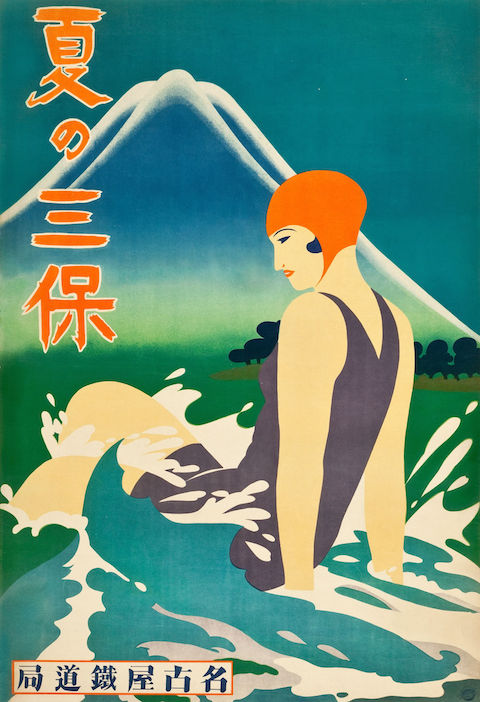
Sound a off-white bit more interesting than the women demanded for today's ads in the W, don't they?
Related Content:
Gaze at Global Motion-picture show Posters for Hitchcock's Vertigo: U.S., Japan, Italy, Poland & Beyond
René Magritte'southward Early Fine art Deco Advertizing Posters, 1924-1927
Mitt-Colored Photographs of 19th Century Japan
Colin Marshall hosts and producesNotebook on Cities and Civilisation as well equally the video serialThe City in Cinema and writes essays on cities, linguistic communication, Asia, and men'south style. He'due south at work on a book about Los Angeles,A Los Angeles Primer. Follow him on Twitter at @colinmarshall or on Facebook.
Source: https://www.openculture.com/2015/02/advertisements-from-japans-golden-age-of-art-deco.html